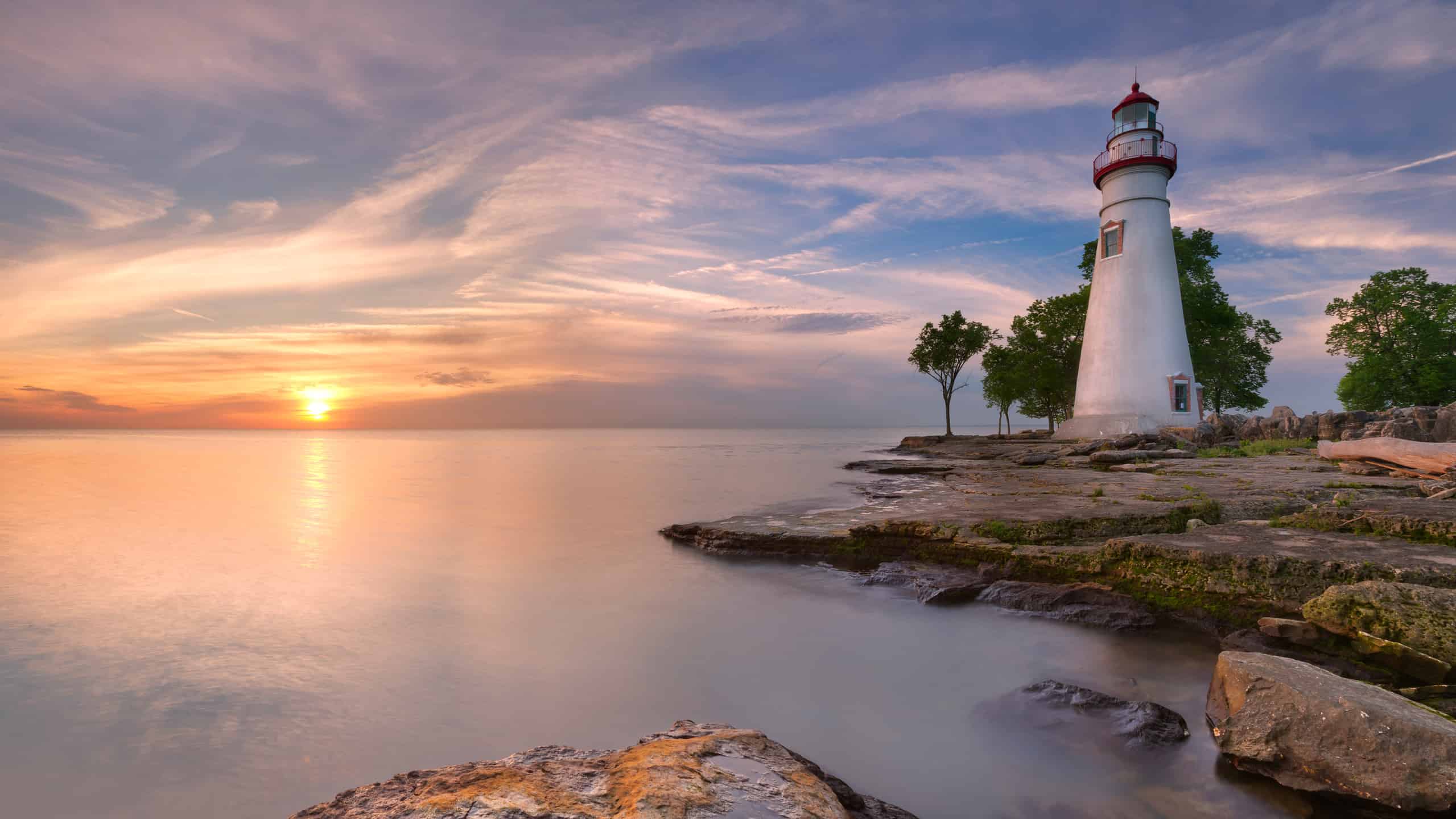Are you considering going swimming or fishing in Ohio lakes? Then you should be aware of the potential risks.
Unfortunately, many Ohio lakes were deemed not safe for swimming in the past. This may mean that eating fish from these areas may not be a good idea, either. Let’s explore why and whether that’s still the case in this short guide.
How Dangerous Are Ohio Lakes — and Why?
Ohio lakes are considered semi-dangerous. There are not too many recorded drowning deaths, at least not compared to other states.
However, Ohio lakes are battling another problem that may pose an additional risk to visitors: high pollution levels. So, let’s unpack these two issues one by one.
Drowning Risks
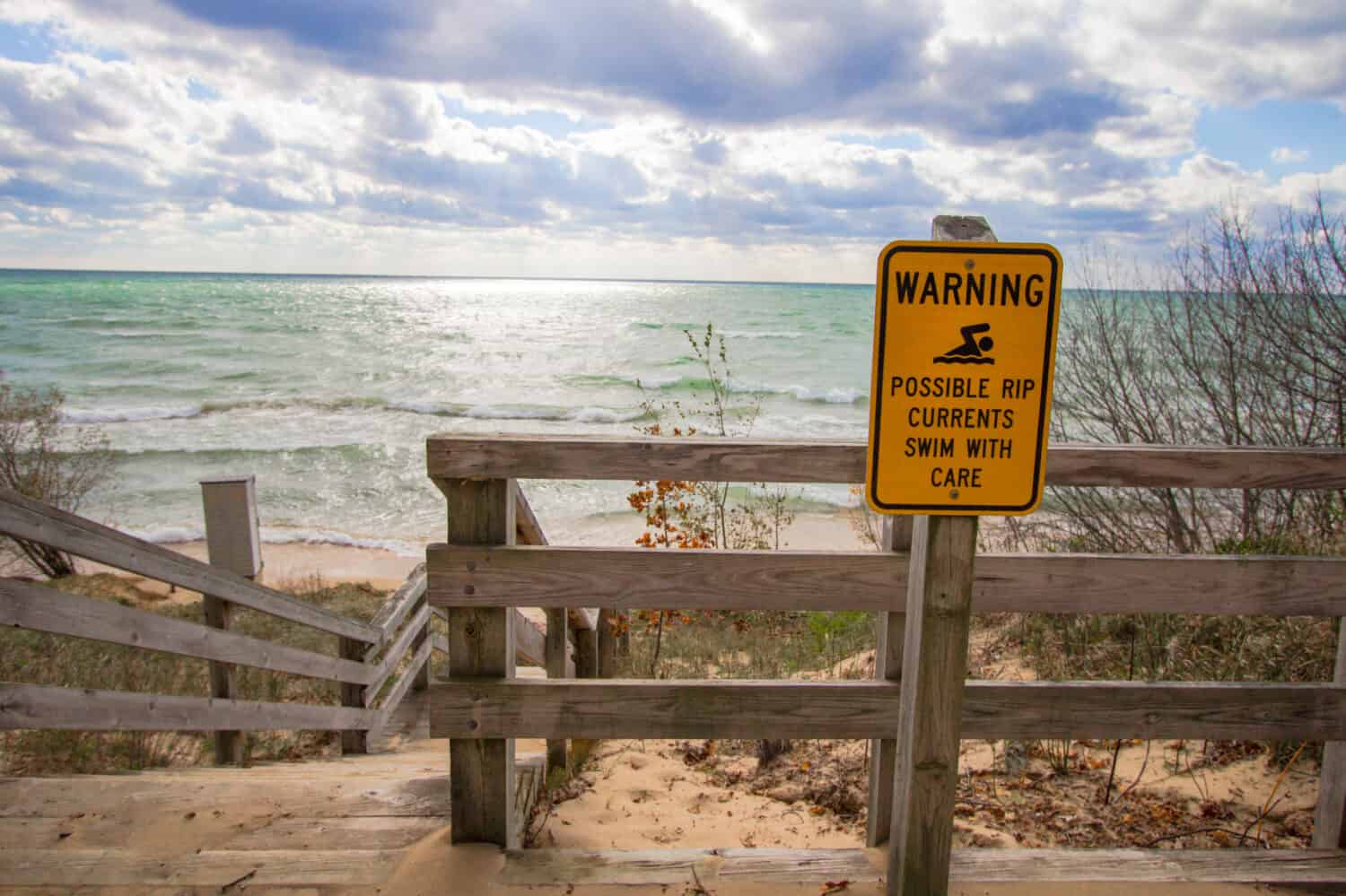
Some Ohio lakes are known for strong and dangerous rip currents.
©ehrlif/Shutterstock.com
Here’s the annual age-adjusted drowning death rate in Ohio and the US according to the data from 2018 — 2021:
- Ohio: 1.14 deaths per 100,000 people
- The US: 1.31 deaths per 100,000 people
So, Ohio has a slightly lower rate than the country’s average. However, these statistics encompass all fatal drowning incidents, regardless of the type of body of water. Unfortunately, at this moment, we don’t have solid data pertaining solely to lakes.
Most people would, however, assume that most of these incidents are not related to lakes, but this may not be correct. While lakes are generally safer than, say, rivers, some Ohio lakes are known for powerful rip currents.
Rip currents are strong and often very deep. Because of this, swimmers may not even be aware of their presence until they’re already swept far away from the shore.
Dangers Related to Harmful Algae Blooms (HABs)
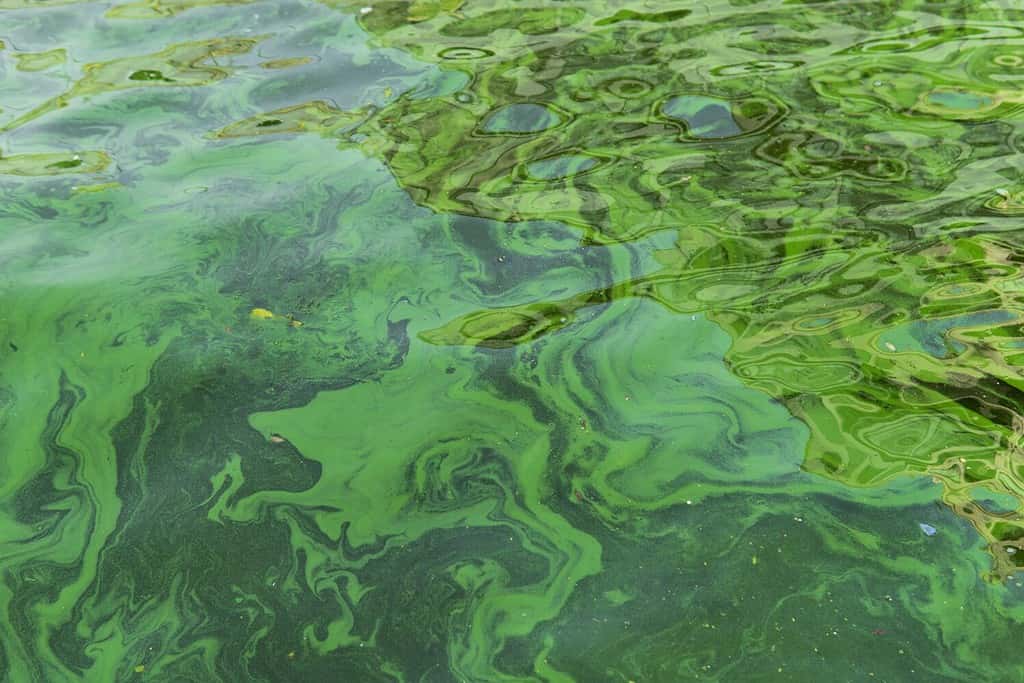
In recent years, Ohio has been experiencing a toxic algae crisis.
©Aleksandrkozak/Shutterstock.com
Algae blooms have become significantly more noticeable in Ohio’s lakes in the last few years. While they’re not always dangerous, certain algae species are known to produce cyanotoxins which can be harmful to both animals and humans. Such species most commonly occur in lakes and oceans.
Harmful algal blooms, or HABs, develop under very specific conditions. They require warm temperatures, sunlight, and high levels of phosphorus and nitrogen — two nutrients often found in high amounts in fertilizers. This bolsters the theory that HABs are primarily caused by agricultural and residential lawn runoff and improper sewage systems.
Exposure to HABs can cause mild to quite severe side effects.
Mild to moderate side effects include:
- Allergic-like reactions (rhinitis, asthma, conjunctivitis, eczema)
- Flu-like symptoms
- Gastroenteritis
- Respiratory irritation
- Skin rashes
- Eye irritation
More serious side effects may include:
- Liver toxicity
- Neurological effects
- Possibly, tumor formation
Symptoms can range from abdominal pain, headache, and sore throat to vomiting, pneumonia, and even respiratory paralysis.
With all of that in mind, it is always advised to stay out if you suspect that a lake is polluted.
The Most Dangerous Ohio Lakes
While Ohio lakes aren’t considered especially dangerous, there are some with which you should take appropriate precautionary measures. In other words, step in only if you’re sure that it’s safe to do so.
Be mindful of both drowning risks and HABs, as well as other danger factors — such as lake depth, current speed, and potentially dangerous wildlife.
Lake Erie
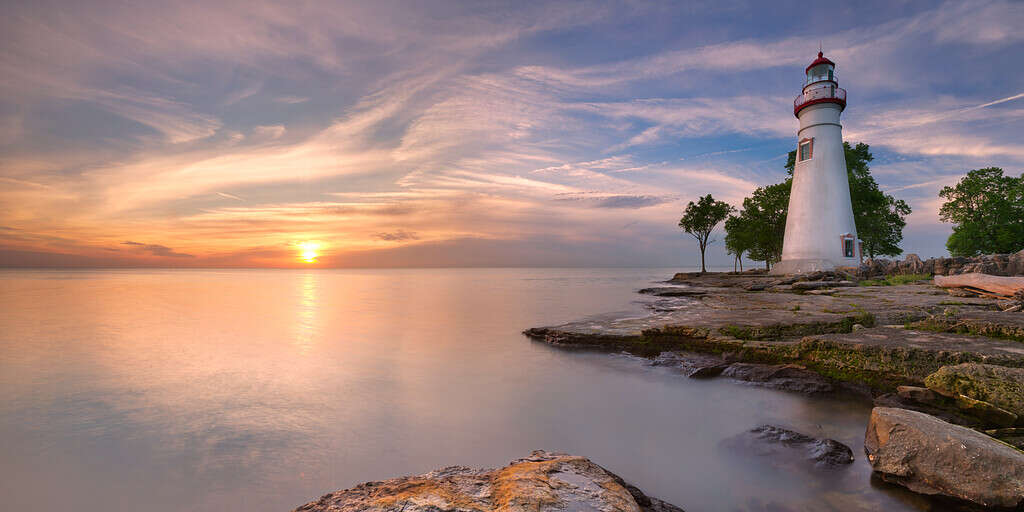
Lake Erie is one of the deadliest Great Lakes.
©Sara Winter/Shutterstock.com
Many consider Lake Erie to be the most dangerous lake in Ohio, which shouldn’t come as a surprise. The lake’s surface area is huge, covering a total of 9,910 square miles (or 25,667 km2), which makes fatal accidents only that much more likely. Visitors can easily get too far from the shore and find themselves completely alone, with no one else in sight.
That may be why Lake Erie was the second deadliest Great Lake for drownings in 2019. The Great Lakes Surf Rescue Project, for example, lists a total of 52 incidents that took place or are otherwise related to this lake from 2016 to the date of this publication.
In many of the reported cases, people lost their lives by falling into the water from boats and rafts. Some have also gone missing or died after trying to rescue other swimmers that went under the water and didn’t resurface.
- Mean depth: 62 feet
- Maximum depth: 210 feet
- Current speed: <= 0.5 knots (low)
- Wildlife: jellyfish, Northern pike, Muskellunge (low danger levels)
Grand Lake St. Mary’s
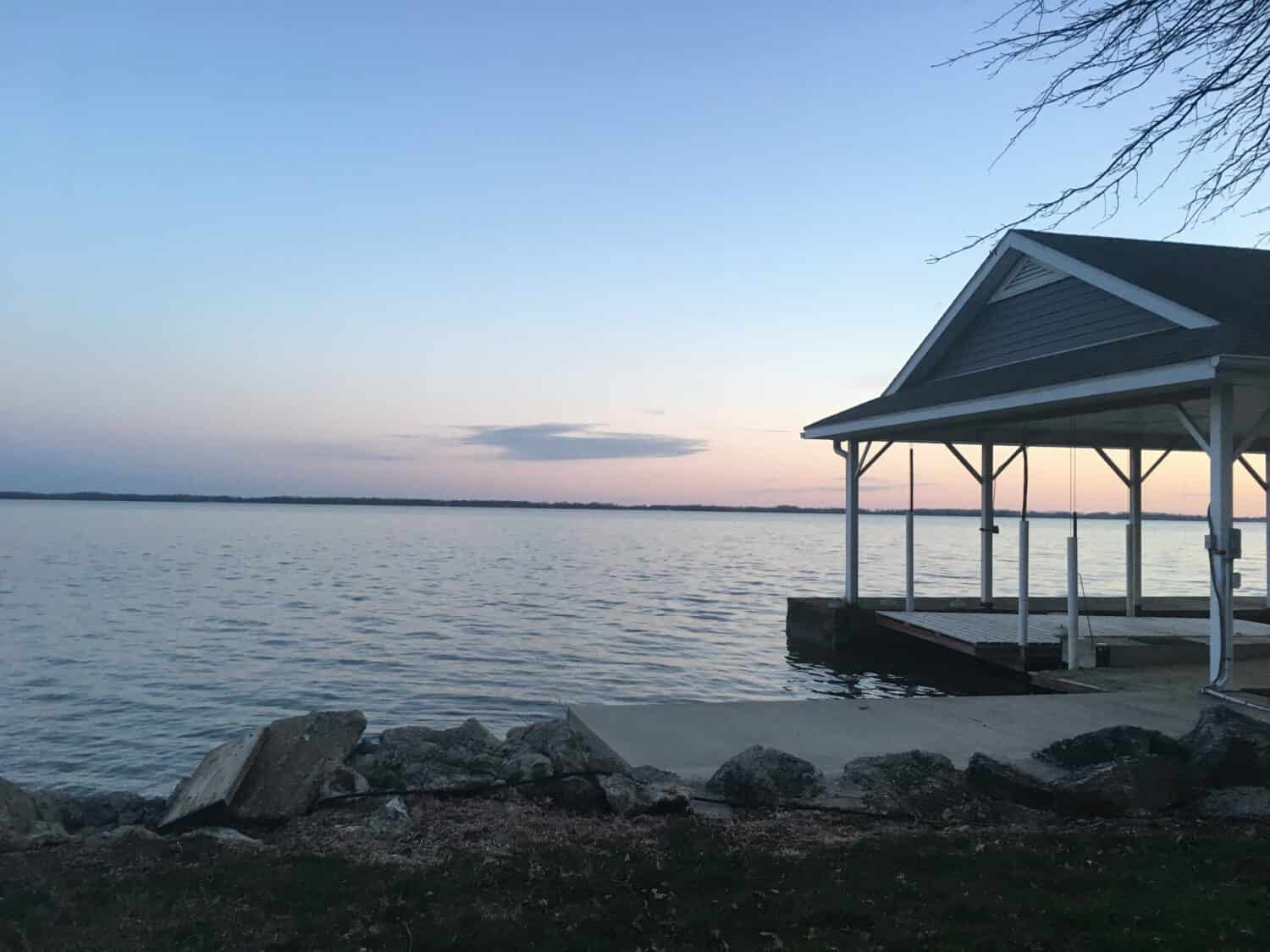
The picturesque Grand Lake St. Mary’s is one of the most polluted lakes in the US.
©lkabbes/Shutterstock.com
Grand Lake St. Mary’s is Ohio’s largest artificial lake, spanning approximately 13,500 acres. Unfortunately, in recent years, it has also become recognized as one of the most polluted bodies of water globally.
HABs have been a common occurrence in Grand Lake St. Mary’s since the 1990s, mainly due to the agricultural runoff and antiquated sewage systems. Sadly, the pollution has significantly decreased the water quality of this otherwise picturesque and biodiverse lake.
However, according to the Ohio Department of Natural Resources, the lake has been showing significant improvements since 2021. This resulted in swimming and fishing restrictions being lifted, at least for now.
- Mean depth: 5-7 feet
- Maximum depth: 16 feet
- Wildlife in and around the lake: catfish, largemouth bass, fox, minks (low danger levels)
Chippewa Lake
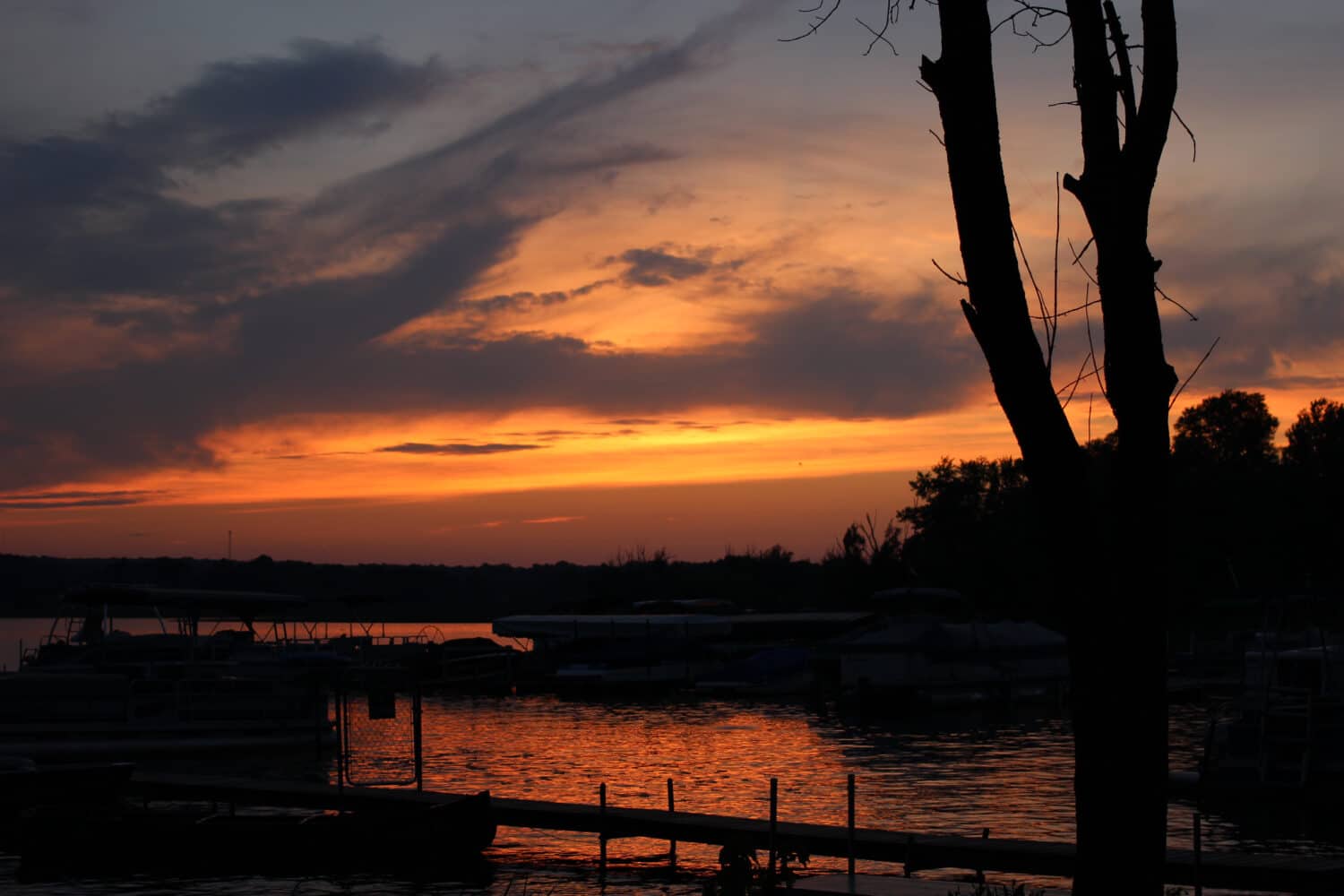
Chippewa Lake is currently free of algal blooms. However, this may not be the case for much longer.
©NickBailey69/Shutterstock.com
Like Grand Lake St. Mary’s, Chippewa Lake was also affected by toxic algae bloom. However, in 2020, it was proclaimed to be free of HABs.
Despite this, Medina County Park District officials stated that a major bloom will likely happen again because the main cause of the issue still hasn’t been treated. Chippewa Lake, sadly, still has high nutrient levels which are caused by pollution.
As with all lakes, visitors are advised not to step in if they notice signs of pollution.
- Mean depth: 12-15 feet
- Maximum depth: 92 feet
- Wildlife: largemouth bass, black crappie, catfish
How to Stay Safe When Visiting Ohio Lakes
If you still decide to swim or go fishing in Ohio lakes, please make sure to take the appropriate precautionary measures. Here are some that will help you avoid potential health and drowning risks.
Learn to Recognize HABs
- HABs can look like spit-like foam, parallel streaks, spilled paint, or pea soup.
- They can also have a distinct odor, usually described as fishy or septic.
- HABs are most often green or blue-green, but can also be red and green-brown.
Unlike HABs, non-toxic algae will usually be green and odorless. They can, however, turn yellow or brown and take on a musty or rotting smell as they die down.
If you’re not sure that you can adequately tell one from the other, it’s best not to test your luck by stepping in.
Stay Informed
Before visiting a lake, try to check the latest water quality reports or advisories from local authorities. You may get valuable information about water pollution levels, bacteria contamination, or other unfavorable water conditions — such as strong rip currents.
You also want to familiarize yourself with the specific lake you’re visiting. Check its pollution levels, depth, or any other potentially dangerous features.
Lastly, pay attention to and respect any warning signs posted around the lake. If a sign says to stay out, please follow that advice.
Practice Good Hygiene
Good hygiene can help you reduce the risk of illness or other health problems caused by contaminants. So, if you suspect that a lake is polluted, make sure to wash your skin thoroughly as soon as you get out. Warm, clean water and soap should do the trick.
Stay Prepared for Emergencies
Finally, be prepared for any and all emergencies.
- If you’re going swimming or fishing far away from the shore, try to always do so with a buddy.
- Consider taking a water safety course that will teach you how to recognize and adequately respond to water emergencies.
- If a water safety course feels like too much, try to at least learn CPR and some basic first-aid skills.
- Always wear a life jacket when using a boat, kayak, or another watercraft. Also, make sure to always check the weather forecast before setting sail.
- If you can, always carry a floating device or a whistle with you.
Thank you for reading! Have some feedback for us? Contact the AZ Animals editorial team.

